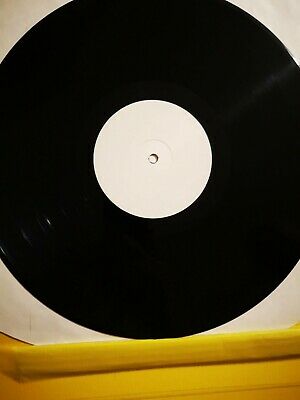

It was a small studio, with a very large underground car park. Apart from that, the sessions were good sessions. “The one thing that sticks in my mind is that when they had a disagreement between themselves, they’d fight each other and roll around on the studio floor, fighting - which is behavior I hadn’t seen since I was at school,” remembered Malone. When interviewed for the book Iron Maiden ’80 ’81, Malone recalled that the “street punk” vibe of the material also spilled over into the studio. To oversee the recording of Iron Maiden, the band enlisted producer Wil Malone, who supposedly was hired due to the fact that he had done an arrangement for Black Sabbath (the song “Spiral Architect,” off 1974’s Sabbath Bloody Sabbath), and set up shop at Kingsway Studios in London. But certain trademark Maiden elements could already be detected at this early stage - especially their Thin Lizzy-esque twin guitar harmonies and galloping bass lines. It was only later on that Maiden would eventually expand their song structures and tackle broader lyrical topics… which admittedly, could border on Spinal Tap territory at times (“Alexander the Great,” anyone?). While Dickinson could get quite operatic at times, Di’Anno’s vocals sound like a punkier Bon Scott, while lyrically, the “Di’Anno Maiden” seemed to focus more on streetwise lyrics. If you are only familiar with “the Bruce Dickinson era” of Maiden - especially their studio recordings post-1984 - you could quite possibly be tricked into believing that their debut was by another band entirely. But by the time they inked a deal with EMI in the UK and Harvest/Capitol in North America, Maiden’s lineup consisted of Di’Anno, Harris, the twin guitar tandem of Dave Murray and Dennis Stratton, and drummer Clive Burr. Originally formed in London circa 1975 by bassist Steve Harris, Maiden would endure countless lineup changes for the remainder of the decade, but in the process, also built a rabid following, issued a popular self-released recording (1979’s The Soundhouse Tapes) and aligned themselves with the fast-rising New Wave of British Heavy Metal - which also included the likes of Def Leppard, Saxon, and Diamond Head, among others. And one of the most obvious reasons for this was because their singer at the time, Paul Di’Anno, was a shorthaired punk rocker.

But in 1980, punk’s attitude was still well on display within the grooves of their debut recording. Granted, Maiden would soon transform themselves into more of a traditional heavy metal band, and erase most of the “punk” from their sonic equation. But eventually, certain bands became bold enough to combine both styles together, including Motörhead, Venom, and early Iron Maiden - especially the latter’s classic self-titled debut album from 1980. When punk rock first hit the scene in the mid to late ‘70s, it appeared to draw a line in the sand, and longhaired metalheads and spiky-haired punkers had to remain on their respective sides.


 0 kommentar(er)
0 kommentar(er)
